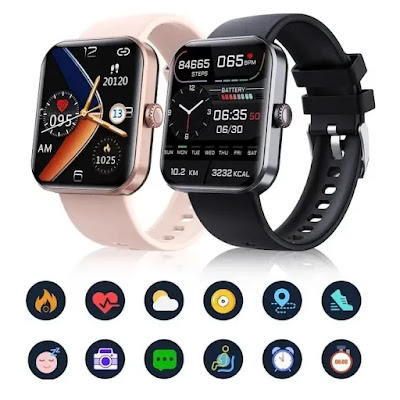 |
| Click above for their webpage* |
In the ever-evolving landscape of wearable technology, the latest breakthrough is poised to revolutionize health monitoring and empower millions worldwide. Say hello to the new generation of smartwatches, now equipped with the ability to measure blood glucose levels—a game-changer for diabetics and health-conscious individuals alike.
With diabetes affecting over 400 million people globally, and its prevalence continuing to rise, this innovative integration of blood glucose monitoring into smartwatches holds tremendous promise. Gone are the days of traditional finger-pricking methods, as these cutting-edge smartwatches offer a non-invasive and continuous way to track glucose levels throughout the day.
Designed for both convenience and accuracy, the incorporation of blood glucose monitoring into smartwatches was no small feat. Leading technology companies collaborated with medical experts to ensure that the sensors utilized are reliable, delivering precise readings without sacrificing comfort. The result is a seamless and user-friendly experience, making managing diabetes a much more manageable task.
For diabetics, this revolutionary feature is a true blessing. Continuous glucose monitoring allows users to stay on top of their blood sugar levels in real-time, enabling prompt adjustments to insulin dosage and lifestyle choices. Smartwatch apps offer personalized insights and alerts, empowering individuals to take control of their health like never before.
But the benefits aren't limited to those with diabetes. Health-conscious individuals, athletes, and fitness enthusiasts can also benefit from this advanced technology. Blood glucose levels play a crucial role in overall health and performance, affecting energy levels, focus, and exercise efficiency. By tracking these levels on the same device that monitors heart rate, sleep patterns, and other vital health metrics, users gain a comprehensive understanding of their well-being.
Beyond individual users, the integration of blood glucose monitoring into smartwatches has significant implications for healthcare professionals and researchers. The wealth of data collected can be anonymously shared with medical institutions to gain a broader perspective on diabetes management and develop more effective treatment strategies.
Of course, with any new technology comes considerations of privacy and data security. The companies behind these smartwatches understand the sensitivity of health data and have made data protection a top priority. Users can rest assured that their information is safeguarded with state-of-the-art encryption and anonymized before contributing to broader research initiatives.
The introduction of smartwatches that monitor blood glucose levels marks a milestone in the quest for smarter, more personalized healthcare. As these devices continue to evolve, we can expect even more health features and medical monitoring capabilities, elevating the role of wearables in promoting proactive health management.
In conclusion, the integration of blood glucose monitoring into smartwatches is a monumental step forward in the realm of wearable technology. With its potential to transform the lives of diabetics and improve health awareness for everyone, these smartwatches represent a promising future of personalized, data-driven healthcare. Whether you're a diabetic seeking enhanced glucose management or a health-conscious individual striving for optimal well-being, the smartwatch with blood glucose monitoring is the new frontier of wellness at your fingertips.
*This is the watch The Wizard has purchased and its a great watch, high quality with tons of monitoring. Note: The Wizard and 'OZ' - The 'Other' Side of the Rainbow make no money from promoting the watch.

No comments:
Post a Comment